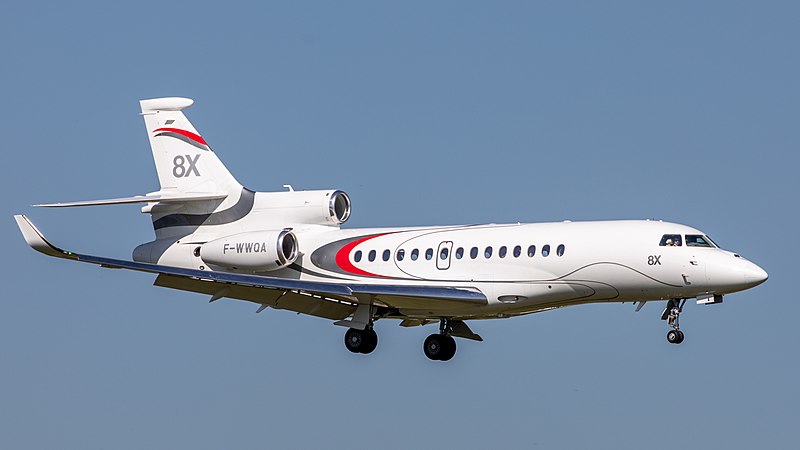Innovation and partnership are two critical ingredients in the aviation industry. When these two are combined, the result can be significant. Let us explore the challenges associated with the LearStars development and how it led to the creation of the hugely popular Canadair Challenger.
Bill Lear, the American inventor, engineer, and entrepreneur, had a deep passion for aviation from a young age. He had a remarkable career as an aviation pioneer and entrepreneur, having been involved in developing a variety of innovative aircraft and electronic products.
Lear founded LearJet Corporation in 1962, aiming to revolutionize the business jet market with a new aircraft surpassing its predecessors in speed, efficiency, and comfort. The company's first product was the LearJet 23, which made its maiden flight in October 1963.
The LearJet 23 was a landmark aircraft that ushered in a new era of business travel. It was designed with a sleek swept wing that gave it a distinctive appearance and enabled it to achieve speeds of 544 miles per hour. The jet's innovative design also included an advanced autopilot system and an improved pressurization system, allowing for greater cabin comfort at high altitudes.

Learjet Lear 23
The LearJet 23 quickly gained popularity among corporate executives and affluent individuals. It could carry up to six passengers and two crew members, making it an ideal aircraft for short to medium-range flights. With its exceptional performance, comfort, and reliability, the LearJet 23 became the benchmark for future business jets, and the LearJet Corporation grew into a significant player in the aviation industry.
Lear began the development of the LearStar ln 1974. He envisioned it as a larger and more capable aircraft than the LearJet. Lear envisioned the LearStar as an aircraft that would be faster, more efficient, and more comfortable than anything before it. It was designed to be more spacious than other business jets, with a roomy cabin accommodating up to eight passengers.
Lear knew he would need additional resources to take the new Learjet to the next level. As a result, he sought out a partner who could help him develop an aircraft that could compete with the biggest names in the business jet market.
Lear entered into a licensing agreement with Canadair, a Canadian aircraft manufacturer interested in producing and marketing the new LearJet. The deal gave Canadair the right to modify the design of the LearJet and build it under the name LearStar.
Canadair was headed by President Fred Kearns and Executive Vice-President Harry Halton. Fred Kearns clashed with Lear over the design of the LearStar. Kearns felt that the design needed to be more innovative and incorporate innovative technologies to be successful in the marketplace. On the other hand, Lear thought that Canadair was more interested in making a profit than producing an innovative and high-quality aircraft. Lear had a sharp vision for the LearStar and was unwilling to cede control over its development to Canadair management. Lear believed that he was being taken advantage of by Canadair.
Methodically, Canadair began making design changes to create a larger, more capable aircraft. The design changes included a larger cabin, more powerful engines, and a wing redesign for improved fuel efficiency and performance. In addition to incorporating a T-tail empennage, due to the impractical location of the horizontal tail in the path of the engine exhaust, as initially envisioned.
Canadair changed the design to such an extent that it virtually became an entirely new aircraft. The Learstar was now an innovative, wide-bodied airframe incorporating new supercritical wing technology, new avionics, and new engines to be constructed to demanding new certification standards.
Due to the many disagreements on how the project was moving away from his original design, Bill Lear was slowly phased out of the design process, and his LearStar 600 was renamed the Challenger 600 in March 1977.
The LearStar program presented Canadair with significant financial and engineering challenges. Canadair struggled with the monumental tasks of designing, building, and selling the new LearStar design. Canadair had to invest a substantial amount of money in the project, and several technical issues needed to be resolved to get the aircraft to perform as desired. In addition, there were disagreements between Lear and Canadair management over the program's direction, which led to tensions and disputes.
One of the most significant issues Canadair faced during the development of the LearStar program was with the engines, which were not performing up to expectations. Canadair had to work closely with engine manufacturer General Electric to resolve these issues, which delayed the program's progress.
Despite these issues, the two companies eventually worked through their differences and brought the LearStar project to fruition, thanks to the determination and perseverance of both teams. They created an aircraft that revolutionized the business jet market and paved the way for future innovations in private air travel.

Today, the Challenger continues to evolve and improve, with new models featuring advanced avionics, more powerful engines, and an extended range. It is still a favorite among business executives and wealthy individuals who demand the best in private air travel, and it is used by businesses, governments, and individuals worldwide.
The LearStar and Canadair Challenger are a testament to the power of innovation and partnership in the aviation industry. By combining their resources and expertise, Lear and Canadair were able to develop an aircraft that exceeded their wildest expectations and changed the face of private air travel forever. Their legacy lives on in the Challenger, one of the most popular and influential business jets ever built.


